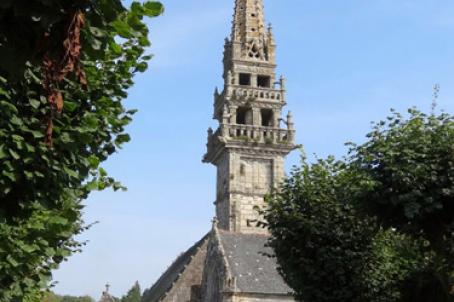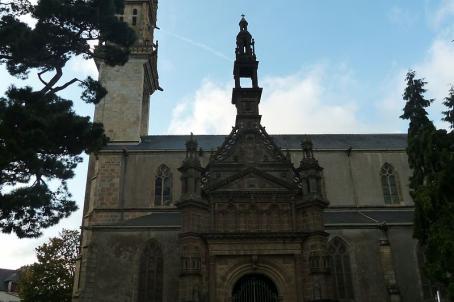Church of Saint-Suliau
Sizun owes its fame to its magnificent parish enclosure, which it owes to the prosperity of the linen industry it enjoyed in the 16th, 17th and early 18th centuries (more than 35 factories were counted there). The parish enclosure of SIZUN, classified as a Historic Monument, is distinguished from other towns by its unique architecture whose ingenuity forces admiration. The Gothic style bell tower is one of the last with spire erected in Brittany, under the reign of Louis XV and bears the dates 1728/1735. It rests on four pillars and has no foundation. Its slender spire, of great finesse, culminates at 56 m. The Arc de Triomphe (1585/1590) is the monument that strikes the attention of all visitors to the parish enclosure. It gave access to the cemetery which, in the past, was located around the church. It is said to be the most beautiful of its kind in Brittany.
About this building
Of the 16th century church only the first two bays of the nave and aisles, as well as the southern porch, remain. From 1638 to 1643 the transept was raised. In 1665, reconstruction of the choir and the apse. The bell tower dates from 1723-1735. The building consists of a nave with three aisles, extended westwards by a false bay separated from the side aisles by two solid walls; a transept also flanked by side aisles; a fourth bay beyond the transept; a choir ending with a three-sided apse and a square porch bell tower ending with an octagonal spire with bells filling the corners of the platform. The arms of the transept end in gables with carved hooks. The sides of the choir and the apse also end with very ornate gables with pinnacles, niches decorating the buttresses, and mullioned bays. Inside, the sandpits are decorated and sculpted. An ossuary and a triumphal arch complete the ensemble.






